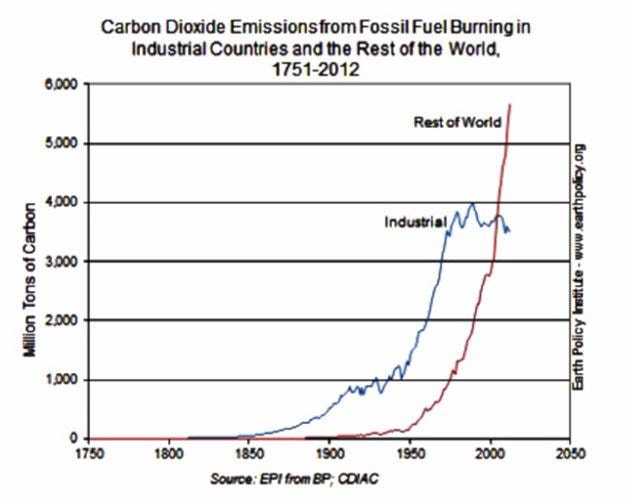As noted in last week's editorial, a group of prominent Republicans recently came forward with a proposal for nationwide carbon fee-and-dividend in the United States.
This is a major step forward in getting an effective climate change policy in the U.S. but, even if implemented, it would not be enough.
In order to have a hope of being adequately effective, carbon fee-and-dividend (or any other climate change initiative for that matter) will need to be global in scope.
Consider a few numbers. Many economists agree that that best way best way to get a handle on human-caused climate change is through “putting a price on carbon” - charging for the right to burn fossil fuels.
Here in British Columbia we have a carbon tax that's presently set at $30 per tonne of carbon dioxide.
It has reduced the amount of fossil fuels being burned in this province by about 17 per cent.
According to Tyndale Climate Centre, the burning of fossil fuels plus cement production produced 33.5 gigatonnes of carbon dioxide in 2010.
That means that a worldwide carbon tax or fee set at $30 per tonne would raise about $1,000 billion per year.
For comparison, the U.S. defence budget in 2015 was about $600 billion.
Of course, to be effective, a worldwide price on carbon dioxide would need to be several times higher that B.C.'s carbon tax. Estimates range from $200 to $300 per tonne.
This is a staggering amount of money.
How could we possibly transfer anything like that amount without inviting corruption on a colossal scale?
The only possible answer would be to give it back directly to the people as dividends.
Assuming there are 5 billion people aged 18 and over in the world, a worldwide carbon tax or fee set at $30 per tonne would be enough to give each of them dividends of about $200 per year – effectively doubling the annual incomes of millions of people.
Incidentally, this helps explain why, despite our having known about the dangers of climate change for several decades and having spent hundred of millions on subsidies for alternative sources of energy, the amount of carbon dioxide in our atmosphere continues to go up at an increasing rate.
We simply have not been spending enough, by at least one or two orders of magnitude.
It also helps explain why the strong resistance to taking adequate measures to control human-caused climate change.
With trillions of dollars changing hands, while everyone should benefit in the long term, some would definitely be losers in the short-term.
Dr. James Hansen, in some ways the dean of climate scientists, has said that carbon fee-and-dividend needs to be adopted by the United States, China and/or Europe (any two out of three).
Once that happens, then the major economic superpowers would use border tax adjustments (tariffs on imports and rebates for exports, based on the amount of fossil fuels used in their production) to force the other nations of the world to follow suit.
In order to work adequately, however, all the money collected through global carbon fee-and-dividend would have to go into one common pot and then be distributed equally.
The graph above shows that the amount of carbon dioxide from fossil fuel burning in the industrial countries has stabilized, while that from the rest of the world continues to go up.
Only with a system that gives incentives to the people of the non-industrialized countries not to use fossil fuels as they industrialize will we have a hope of adequately controlling climate change.
That system is global carbon fee-and-dividend.
